EarthCheck
EarthCheck Progress
By end of 2022, 39 sectors including 31 hotels that we own or manage were enrolled with EarthCheck. Of enrolled sectors, 72% have achieved Gold or Platinum certification. The newly enrolled Angsana Xishuangbanna achieved Bronze Benchmarked in 2022.
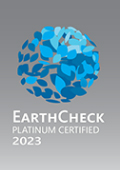
Banyan Tree Lijiang
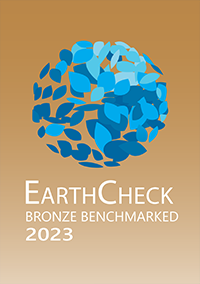
Banyan Tree Bangkok, Banyan Tree Mayakoba, Banyan Tree Samui and Banyan Tree Krabi, Banyan Tree Vabbinfaru, Banyan Tree Ringha, Banyan Tree Sanya, Banyan Tree Macau, Banyan Tree Cabo Marqués, Angsana Ihuru, Angsana Velavaru, Maison Souvannaphoum Hotel, Laguna Lăng Cô (Banyan Tree, Angsana, Golf, Laguna Services), Laguna Phuket (Banyan Tree, Angsana, Cassia, Golf, Laguna Holiday Club, Angsana Villas Resort, LRH Offices, Laguna Services), Laguna Bintan (Banyan Tree, Angsana, Cassia and Golf), Angsana Xishuangbanna
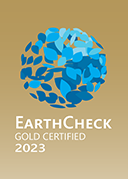
Banyan Tree Club & Spa Seoul, Banyan Tree Yangshuo, Banyan Tree House in Singapore, Banyan Tree Chongqing Beibei, Banyan Tree Anji, Banyan Tree Huangshan, Banyan Tree Kuala Lumpur, Angsana Tengchong Hot Springs Village, Angsana Xi’an Lintong, Pavilion Hotel Kuala Lumpur
Embracing the Environment






Our business has always been based on a connection with nature. Because of this, we recognise the importance of doing our part to mitigate climate impacts. With our experience in research, remediation and resource conservation, we are also partnering external organisations and local communities to support climate action and the UN Sustainable Development Goals.
Tourism significantly impacts the climate through high energy and resource use, infrastructure development and complex supply chains. Conversely, climate-friendly tourism can bring real benefit to at-risk destinations.
Key Performance Indicator
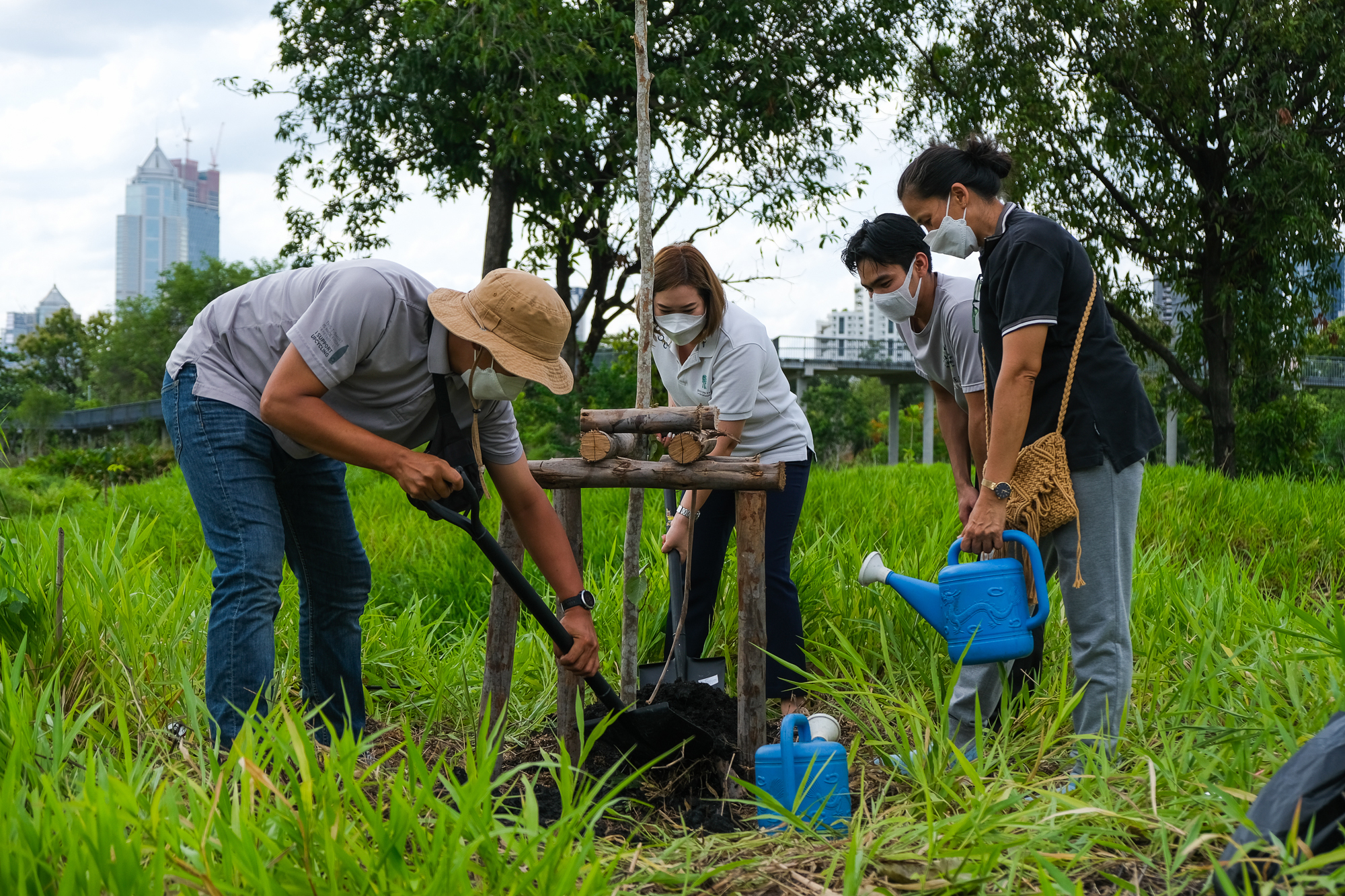
Scope
This Report includes direct emissions from owned and managed operations (hotels, offices, spas, galleries, golf) and construction (Scope 1 emissions), and indirect emissions from the consumption of purchased electricity, steam, heat and cooling (Scope 2 emissions)*. This is the first year we have included emissions for non-EarthCheck properties, based on verified data using location-specific emission factors provided by EarthCheck for each fuel type or purchased electricity. Data were not available for Homm Bliss Southbeach Patong.
At this time, this Report does not cover indirect emissions (Scope 3) from operations not owned by the company in the value chain upstream (travel, employee commuting waste, purchased goods and services and their transportation, guest travel and capital goods) and downstream (franchises, leased assets). However, we are measuring baseline Scope 3 emissions in 2023, in anticipation of expanding future reporting.
As methodologies evolve, as well as our understanding on how to address climate change in a meaningful way, so should our approaches in measuring our carbon footprint and in reducing our emissions over time. As part of our transition plan, from 2023 we will be changing our baseline from 2019 to 2022, to be in line with Science Based Targets initiative (SBTi) guidance and the latest climate science. Our business recognises the importance of continuous improvement and going above and beyond wherever possible, so in anticipation of improving our future reporting, we will also be extending the scope of our GHG footprint measurement from Scope 1 and Scope 2 for hotels only, to include non-hotel operations and Scope 3 emissions from 2023 reporting onwards.
*In 2023, we will expand our baseline scope to include major subsidiaries.
Management approach
To achieve our targets of reducing emissions, we are taking a holistic approach to embed climate risk in our business development, operations and supply chain. In 2023, we will apply multiple climate scenarios to assess the risks across the business value chain. Climate risk is incorporated into the Group’s Enterprise Risk Management, which is reported every quarter to the Audit & Risk Committee (ARC) and the Board of Directors (Annual Report, pages 48–51). We have also partnered with EarthCheck since 2010 to ensure transparency, objective benchmarking and independent certification.
Task Force for Climate-related Financial Disclosures (TCFD) Content Index
The TCFD recommendations cover four elements (Governance, Strategy, Risk Management and Metrics & Targets), which are disclosed in various sections of this Sustainability Report.
Governance
Describe the Board’s oversight of climate-related risks and opportunities
- The ARC has oversight of the Group’s sustainability approach and the integration of sustainability-related matters, including climate-related issues, in the formulation of Group strategy. The ARC reports to the Board and is the primary vehicle for engagement with the Board on sustainability matters. There are quarterly meetings to track progress, raise issues or concerns and obtain input and feedback.
- The ARC is updated on the climate-related risk and opportunities and actions taken by management in line with TCFD requirements every quarter.
- The ARC monitors and oversees progress on sustainability and climate-related risks and opportunities that meet shareholders’ expectations, and reviews significant issues raised.
- The Board approves the Sustainability Report, which provides comprehensive sustainability disclosures.
Describe management’s role in assessing and managing climate-related risks and opportunities.
- The management Executive Committee (Exco) is responsible for monitoring the ESG factors and performance/prospective impact.
- A sustainability team comprising Group Sustainability and Risk managers, drives the implementation of the Group’s sustainability strategy. The team is headed by an Exco member.
- Each property has a Sustainability Champion and Green Teams to support the Group’s strategy.
Strategy
Describe the climate-related risks and opportunities the company has identified over the short, medium, and long term.
- We have so far identified 10 climate-related risks and classified each as short-term (up to 2025), medium-term (2025 to 2030) and long-term (beyond 2030).
Physical risks are: 1) increased severity of extreme weather, 2) rising and lowering of mean temperature, 3) degradation of physical tourism destinations, 4) scarcity of water, 5) rising sea levels.
Transition risks are: 1) changing customer behaviour, 2) increased pricing of GHG emissions, 3) lack or cost of new technology to mitigate physical risks, 4) impact on supply chain, 5) mandates on and regulation of existing products and services, carbon taxes.
Additional risks may be added in future if deemed necessary.
Describe the impact of climate- related risks and opportunities on the company’s businesses, strategy, and financial planning.
- In 2022, we strengthened our understanding of how climate-related risks and opportunities could potentially affect our respective business lines and operational activities.
- In 2023, we will apply multiple climate scenarios to quantify risk to our assets geographically and over time, and to ensure our strategy is appropriate, comprehensive and resilient.
Risk Management
Describe the company’s processes for identifying and assessing climate-related risks.
Describe the company’s processes for managing climate-related risks.
Describe how processes for identifying, assessing, and managing climate- related risks are integrated into the company’s overall risk management.
- The Group follows its Enterprise Risk Management Framework in identifying, assessing and managing climate-related risks. Climate change is identified as a Tier 1 risk.
- A separate climate-change risk register identified 10 climate-related risks, ranked them based on likelihood and impact, and classified them under the three time horizons.
- We will continue to monitor and review developments to relevant standards and fine-tune our risk taxonomy and framework.
Metrics and Targets
Disclose the metrics used by the company to assess climate-related risks and opportunities in line with its strategy and risk management process.
- The Group uses the following metrics: 1) energy use, 2) energy intensity, 3) emissions produced (Scope 1 and 2, with Scope 3 to be included from 2023), 4) emission intensity
Disclose Scope 1, Scope 2 and, if appropriate, Scope 3 greenhouse gas (GHG) emissions, and the related risks.
Describe the targets used by the company to manage climate-related risks and opportunities and performance against targets.
- The Group has measured and disclosed in this Sustainability Report our Scope 1 and Scope 2 GHG emissions, which remain in our control, including the related risks.
- In 2023, we will finalise the metrics used to assess climate-related risks and opportunities, including Scope 3 GHG emissions for the Group. We will also establish targets used by the Group in qualitative terms, together with qualitative scenario analysis.
Progress
(vs 2019)
- Compared to our baseline of 2019, total energy use and corresponding Scope 1 and 2 greenhouse gas emissions (GHG) in 2022 were lower by 6%, despite the number of properties increasing from 47 to 63. This was due to improved efficiency and some temporary closures.
- Energy use consisted of 57% purchased electricity, 34% stationary fuel and 9% mobile fuel.
- Both energy intensity and GHG production intensity (POR) for Group-owned hotels fell by 41% compared to 2021.
Energy use consisted (2022)
(2022)
(2022)
(2022)

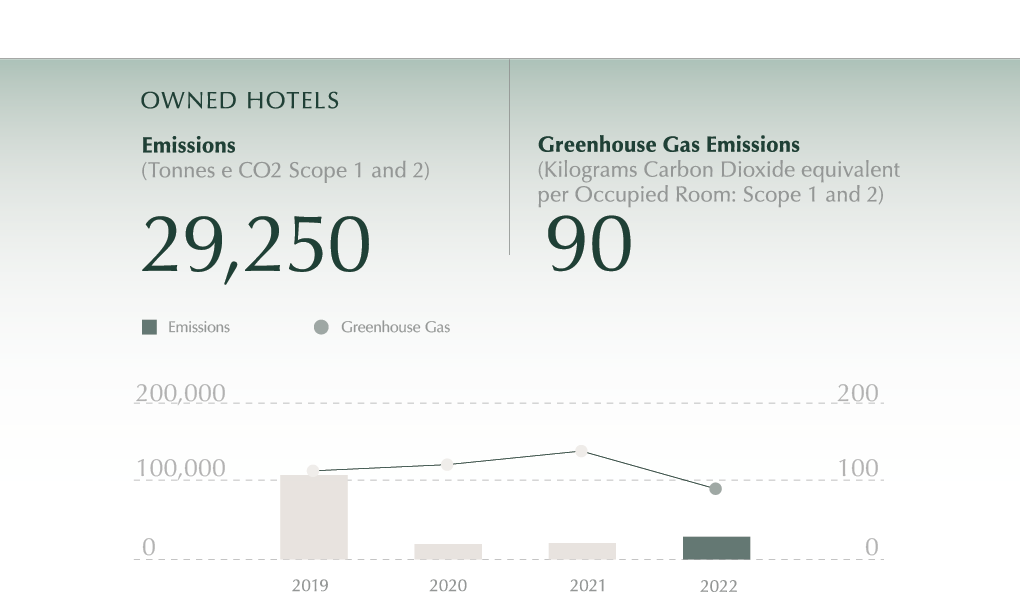
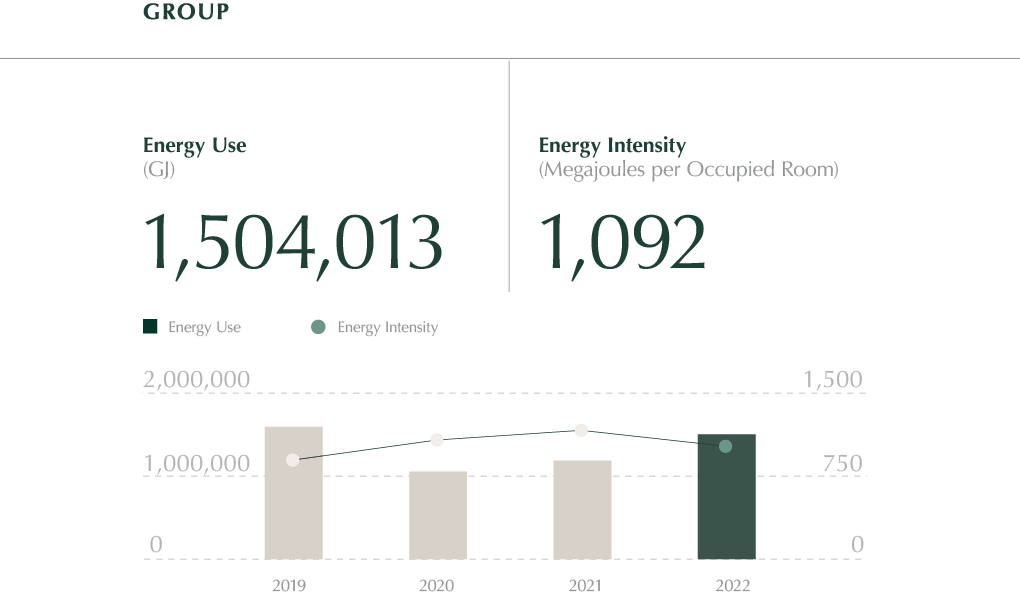
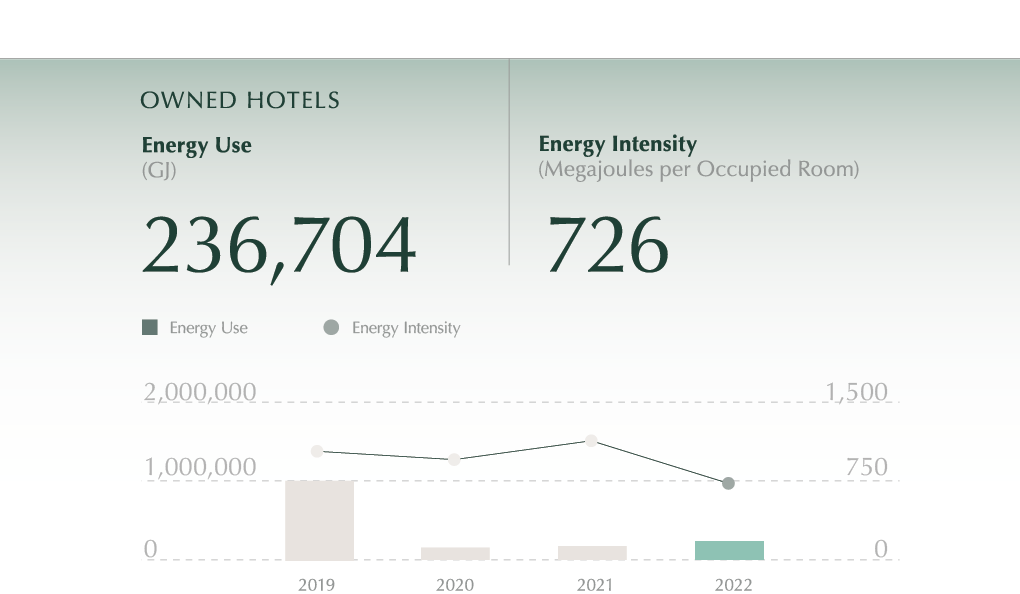
Resource Conservation Initiatives
Number of Initiatives
No Data Found
Number of Properties
No Data Found
In addition to TCFD requirements, we undertook the following initiatives in 2022:
To validate our Scope 1 and 2 emissions and support development of a decarbonisation roadmap, we engaged a consultant to map and verify emissions across our portfolio, and support development of our decarbonisation roadmap.
We adopted a Marginal Abatement Cost Curve (MACC) analysis to understand and prioritise decarbonisation projects at Laguna Phuket based on return on investment.
Through 113 initiatives, including phasing out incandescent light bulbs and switching to more energy-efficient air conditioners, we reduced energy consumption by 2.98 million kWh in 2022.
In a pilot solar project at Laguna Phuket Kindergarten, rooftop photovoltaic panels met 43% of energy needs for the year.
Since launching the Greening Communities programme in 2007, we have planted 538,374 trees in local communities, sequestering approximately 204,867 tonnes of carbon (based on 40 kg of carbon sequestered per tree per year, and assuming 100% survival).
Next Steps
In 2023, we will:
Expand the scope of our emissions reporting to cover Scope 1 and 2 for the non-hotel aspects of our business and establish baseline Scope 3 emissions.
Conduct TCFD quantitative scenario risk mapping with the assistance of an external consultant.
Apply the MACC to additional properties to prioritise emission reduction and renewable projects.
